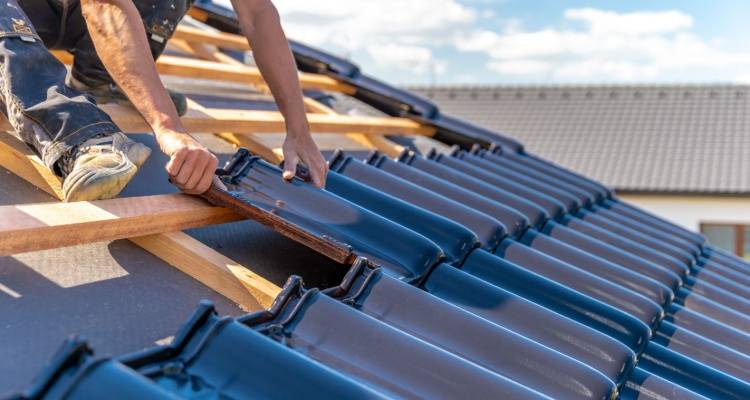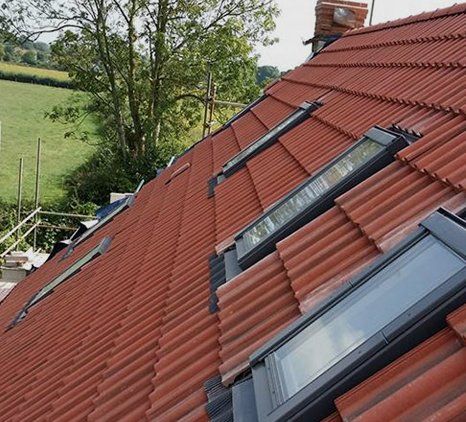Typical Roofing Problems and How to Resolve Them Successfully
Typical Roofing Problems and How to Resolve Them Successfully
Blog Article
What to Anticipate Throughout an Expert Roof Setup Process
Recognizing the specialist roof installment process is vital for homeowners considering this considerable financial investment. This process typically commences with a first assessment and a comprehensive inspection of the existing roof covering, setting the phase for what exists ahead. The contractor's technique includes careful prep work of the worksite, making sure security and performance as the task unfolds. Nevertheless, the subtleties of each stage-- from the removal of old products to the final walkthrough-- can considerably influence the total experience and result. What particular facets should home owners be particularly attentive to during this critical time?
Initial Examination and Evaluation
Before getting started on a roofing setup task, a first assessment and detailed evaluation are critical. This preliminary stage sets the foundation for an effective roof covering project, ensuring that both the contractor and property owner are lined up on expectations and needs. Throughout the assessment, the specialist examines the existing roofing's problem, identifying any underlying issues that might affect the installment process, such as architectural damages, leakages, or insufficient air flow.
The evaluation commonly entails a thorough evaluation of the roof covering's materials, pitch, and water drainage systems. The contractor might additionally check out the attic space for indicators of wetness or insulation troubles. This thorough analysis permits the identification of essential repair services that should be dealt with before waging the setup. Furthermore, this meeting provides a possibility for homeowners to review their choices concerning products, designs, and spending plan constraints.
Preparing the Worksite
As soon as the first consultation and assessment are full, the next step is preparing the worksite for the roofing installation. This stage is vital to make sure a risk-free and effective project. The roof professional will certainly start by getting rid of the area around the home, eliminating any kind of obstacles that might restrain the setup process. This consists of relocating outdoor furniture, vehicles, and landscape design features that could be damaged or block access to the roof.
Next, protective actions will be implemented to secure the residential property. Tarps or drop towels are typically expanded on the ground to capture any kind of particles that may fall during the setup, lessening damages to the landscaping and outside surfaces. In addition, the contractor will certainly analyze and secure any necessary scaffolding or ladders to make certain the safety of the team.
Precaution are extremely important throughout this stage; the team will certainly ensure that all tools and tools are arranged and conveniently accessible. By diligently preparing the worksite, the roof contractor establishes the phase for a seamless installment process, ultimately resulting in a successful roofing job. This prep work stage is necessary for keeping performance and ensuring the safety of both the workers and the residential or commercial property.

Roof Covering Elimination and Disposal
The procedure of roofing system elimination and disposal is an important action in any roofing installment task, as it entails the careful taking apart of the existing roof covering products. This phase normally starts with an assessment of the roofing system's problem and the identification of any type of possible risks, such as damaged decking or structural issues. Precaution are prioritized, including the use of individual safety tools and safe and secure scaffolding to make certain the safety of workers.
As soon as the evaluation is full, the existing roof materials, such as membranes, floor tiles, or shingles, are methodically eliminated. This usually entails using specialized devices to remove the materials without causing damage to the underlying structure. Treatment is required to decrease particles and sound, as well as to secure surrounding areas.
Numerous professional roof covering firms adhere to regional guidelines pertaining to waste disposal and recycling, often repurposing materials when possible. This precise approach to roof covering removal and disposal establishes the structure for the successful setup of new roof products.
Installation of New Roof Covering Products
New roof covering products are meticulously installed complying with the removal of the old roof covering, ensuring a solid and resilient structure. The installation process starts with the application of an underlayment, which acts as a protective barrier against wetness and gives an added layer of insulation. It is crucial that the underlayment is laid out efficiently and securely, with overlapping seams to avoid water seepage.
When the underlayment is in location, the choice of roofing material-- be it asphalt shingles, metal see it here panels, or tiles-- can start. Each material has details installation standards that should be abided by for optimum efficiency and long life. As an example, asphalt shingles are generally installed beginning from the lower side, overlapping each row to network water away efficiently. On the other hand, steel roofing systems need securing strategies that make sure panels are protected and enable for thermal development.
Throughout this phase, experts pay very close attention to details such as flashing installations around smokeshafts and vents to avoid leaks. Appropriate air flow systems are also integrated to maintain airflow and reduce warmth accumulation, hence adding to the total effectiveness and life-span of the new roofing system.
Last Examination and Clean-up
A detailed last inspection More hints and clean-up are vital action in the roof covering installment procedure, making sure that the recently completed roof covering meets safety and security and top quality standards. Throughout the last inspection, roof professionals will carefully check out every aspect of the installation, including the positioning of tiles, the integrity of blinking, and the overall workmanship. This exam aids determine any kind of prospective issues that may have developed during installment, enabling punctual corrections.
Along with evaluating the roofing itself, the evaluation also includes the surrounding areas, ensuring that particles, nails, and other materials are gotten rid of. A tidy worksite is essential to prevent mishaps and maintain the aesthetic allure of the residential property. Roofing teams will commonly make use of magnetic tools to accumulate any stray nails, guarding both the homeowners and their vehicles from prospective dangers.

Conclusion
In conclusion, the specialist roofing setup procedure encompasses several vital stages, including initial appointment, website prep work, roofing system elimination, and the installation of brand-new products. Comprehending these actions gears up home owners with the understanding to navigate other the roof covering setup process properly and with confidence.

Report this page